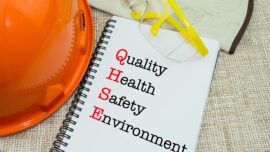
How to create a safe work space?
Left unchecked, any small leakage, malfunction, or damage could turn into a health hazard potentially threatening the safety and wellbeing of employees and other individuals present at the workplace. Workplace hazards and injuries are one of the leading causes of preventative liabilities, be it financial, legal, physical and moral in businesses. A business owner has a responsibility towards all his tenants to ensure their wellbeing in order to create a healthy, safe, and productive work environment.
Compliance with all safety regulations
The first thing a business owner must do is make sure that the workplace is compliant with all safety regulations legislatively set by the country that the office is based in. Every profession, location, or machine that require licenses for legal operation need to have their necessary certifications, constantly renewed and up-to-date with all the requirements. Operational standards must meet international safety regulations whether in the back-end office space or in operational industrial environment, equipped with heavy machinery. Such safety precautions ensure not only compliance with the state’s safety regulations, but also protect organizations from any legal problems that might occur.
Close safety loopholes with disaster planning
In order to guarantee a safe working environment, a business owner has to know the ins and outs when it comes to potential safety hazards. All potential safety hazards should be audited regularly with elaborate crisis plans in place and most importantly the division of roles in crisis cases, with graphical representation of different potential causes of accidents. It is also advisable to hire an expert company, specialized in health and safety auditing, contracted to classify issues not identified internally.

Availing safety-related communication
Businesses managing construction, drilling and other industrial sites should ensure their personnel are working in a safe environment, with their wellbeing not compromised at any stage of operations. Internal safety regulations need to be clearly communicated through posters and signages. Communication should encompass operational safety best practices and regulations and evacuation plans in cases of fire.
Regular maintenance check ups
Even if a company possesses all safety regulation certifications and even if they ensure their workers’ safety from the minute they clock in till they check out, it is important for the QHSE manager to run regular maintenance checkups for all the electrical and mechanical appliances on premise, as a power burst or a machine malfunction could fatally threaten employees’ wellbeing.
In order to enhance the direct correlation between to productivity and efficiency and workplace safety, business managers must understand safety measures not only from a financial and legal perspective, but also from a moral one.





